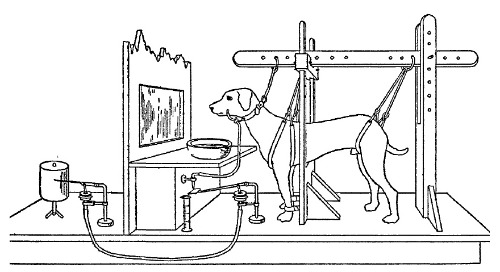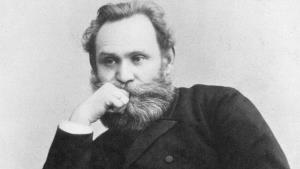- History of Learning Theories
- Learning Theories in Practice
- Behaviorism
- Humanism
- Cognitivism
- Constructivism
Classical Conditioning
Definition
Classical conditioning is a multistep procedure, which can be summarized as follows:
- Initially it involves presenting an unconditioned stimulus (UCS), which elicits an unconditioned response (UCR).
- To condition the animal requires repeatedly presenting an initially neutral stimulus for a brief period before presenting the UCS.
- The neutral stimulus becomes a conditioned stimulus (CS) that elicits a conditioned response (CR) similar to the original UCR.
| Phase | Stimulus | Response |
|---|---|---|
| 1 | UCS (food powder) | UCR(salivation) |
| 2 | CS (metronome), them UCS (food powder) | UCR(salivation) |
| 3 | CS (metronome) | CR(salivation) |

Basic Assumptions and Principles
Elements are important in understanding the classical conditioning process:
- Acquisition is the initial stage of learning when a response is first established and gradually strengthened.
- Extinction is when the occurrences of a conditioned response decrease or disappear.
- Spontaneous Recovery is the reappearance of the conditioned response after a rest period or period of lessened response.
- Stimulus Generalization is the tendency for the conditioned stimulus to evoke similar responses after the response has been conditioned.
- Discrimination is the ability to differentiate between a conditioned stimulus and other stimuli that have not been paired with an unconditioned stimulus.
Primary Theorist
Ivan Pavlov
Behaviorism had its earliest start with the work of a Russian physiologist named Ivan Pavlov on the digestive systems of dogs, which demonstrated that behaviors could be learned via conditioned associations.

Pavlov believed that conditioning is an automatic process that occurs with repeated CS–UCS pairings and that repeated nonpairings extinguish the CR. Any perceived stimulus can be conditioned to any response that can be made.
Classroom Implication and Teaching Strategies
Classical conditioning isn’t as dominant as it was in the early stages of instructional design and educational technology. Though this behaviorist model has been criticized, it is extensively used in behavioral therapies to help people overcome phobias or other anxiety problems.
Resources
Key Works
- Hull, C. L. (1943). Principles of Behavior: An Introduction to Behavior Theory. New York: Appleton-Century-Crofts.
- Pavlov, I. P. (1897). The Work Of The Digestive Glands. London: Griffin.
- Pavlov, I. P. (1927). Conditioned Reflexes: An Investigation of the Physiological Activity of the Cerebral.
- Cortex. Translated and Edited by G. V. Anrep. London: Oxford University Press.
- Watson, J. B. (1913). Psychology as the behaviorist views it, Psychological Review, 20, 158-178.
- Watson, J. B. (1930). Behaviorism (revised edition). University of Chicago Press.
- Watson, J. B., & Rayner, R. (1920). Conditioned emotional reactions. Journal of Experimental Psychology, 3, 1, pp. 1–14.
